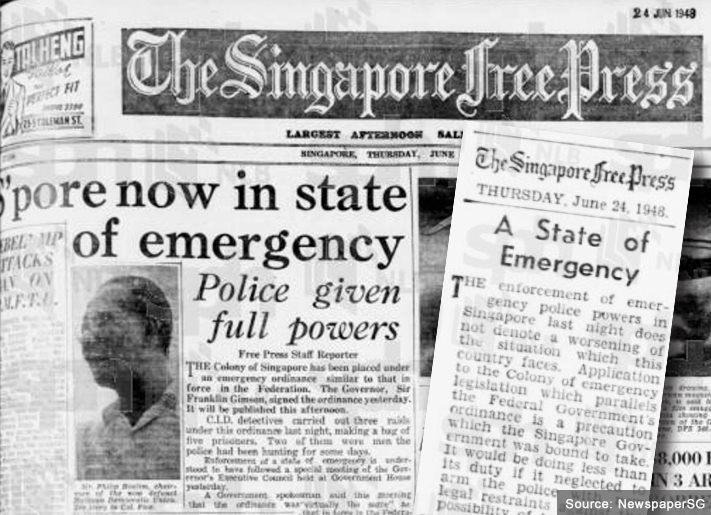Singapore in State of Emergency
#onthisday in 1948, Singapore entered a state of emergency. This came in response to the ongoing armed struggle by the Communist Party of Malaya (CPM) in Malaya and Singapore.

The CPM, which had garnered public support after fighting with the British against the Japanese during the war, aimed to established communist rule in Malaya and Singapore.
After the war, the CPM rallied the working class against colonial authorities and subverted law and order. Its influence spread across Malaya and to Singapore. On 16 Jun 1948, some of its members killed three British planters in Perak, triggering the start of the Malayan Emergency.
Under the emergency, the colonial government implemented tough security measures in Singapore, such as regulations allowing for arrest and detention without trial. It banned organisations affiliated with the CPM under the new Societies Ordinance and Trade Union Ordinance.
However, the CPM continued to infiltrate various groups in Singapore, including political parties, trade unions, and student organisations. It instigated labour unrest and strikes. There was murder, arson, and assassination attempts — including one on then-Governor of Singapore Franklin Gibson in Apr 1950. As former MM Lee Kuan Yew observed in his memoir (The Singapore Story), “the militancy proved contagious”.
The tumultuous 12-year state of emergency in Singapore is one flashpoint in our history. It took a tremendous effort involving the police, military, civil operations and intelligence to respond to the insurgency.
By the time the Malayan Emergency formally ended on 31 Jul 1960, it had wounded the lives of some 8,000 civilians and security personnel across Malaya and Singapore.

